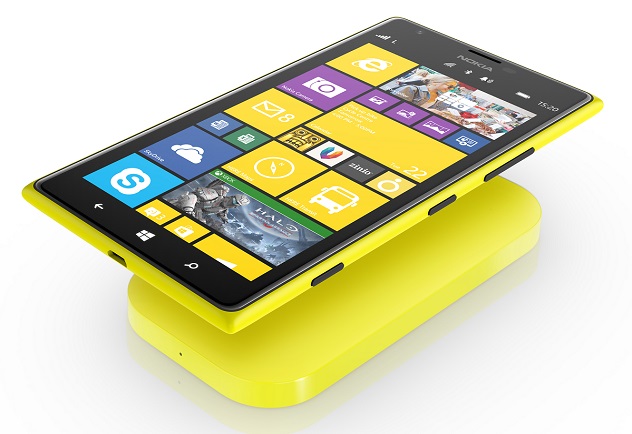However Nokia’s mobile star was fading fast and Ballmer was getting frustrated. Nokia had remained welded to Symbian for far too long, and its users had migrated to Android smartphones and Apple iPhones in their millions, never to return.
Distinctive Hardware
But Windows Phone did have a chance to become a small third player in what was a two horse race.
Ballmer took the eventful decision in 2013 to acquire Nokia’s Devices & Services business for 3.79 billion euros (£3.3bn) in an effort to better control Redmond’s push into mobile (and throw lots of money into marketing the mobile OS).
And for a while things looked more positive, although analyst figures showed that WP remained in a very distant third position behind Android and iOS, and still had a tiny market share in comparison.
![]() Yet the Lumia Windows Phone flagships were distinctive, bold and big.
Yet the Lumia Windows Phone flagships were distinctive, bold and big.
Sometimes very big!
Windows Phones were often colourful and highly durable devices, and tended to have a better battery life than its iPhone rivals at the time. The Lumia was also the first phone with curved glass bezels. And the Lumia also came with HERE Maps and HERE Drive integrated, which provided users with an offline SatNav capability which did not consume expensive mobile data.
Remember, Google Maps at the time only allowed you to download small areas of offline maps, but the Lumia allowed you to download maps of entire countries and navigate across the country without a data connection whilst driving.
And the Lumia established an enviable reputation for their ability to capture stunning pictures with devices like the Lumia 1020 – pictures that iPhones and Android flagships have only just been able to match, years later.
![]() And the Lumia range also had other tech that four years later even iPhones of today still do not have. Wireless charging anyone?
And the Lumia range also had other tech that four years later even iPhones of today still do not have. Wireless charging anyone?
So things were looking good, but still the Windows Phone market share struggled as the Android and iPhone community stayed firmly away from the platform.
Windows Phone 8.1 was released to manufacturing in April 2014 included the company’s Cortana digital assistant. By then Windows Phone had started to make small inroads in a number of countries such as the UK and Italy.
But it never cracked the all important US market, where its reach was dented by limited carrier adoption.
App Gap
And whenever Windows Phone was compared to its Android and iOS rivals, reviews often centred upon the limited number of Windows Phone apps.
And whilst it was true that the Windows Phone store did not have anywhere near the number of apps of Google Play for example, it is worth remembering that Microsoft had much tougher criteria for app developers than Android.




